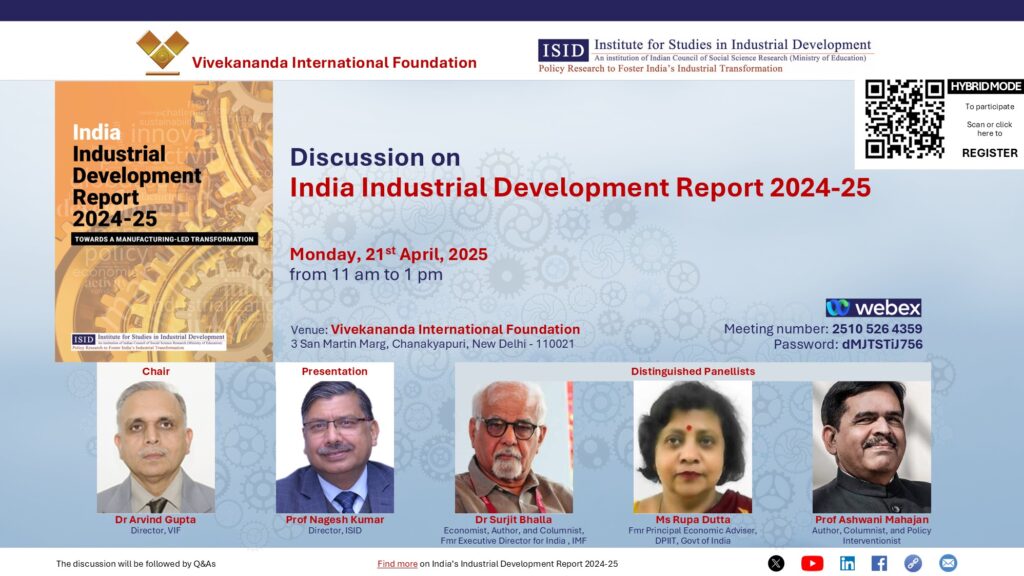 |
| Click here to REGISTER | INVITE | |
Concept NoteAs India embarks on achieving its aspirations to achieve ‘Viksit Bharat’ or a developed country status by 2047, the manufacturing sector seems to be an answer to creating decent jobs for its youthful population and fostering inclusive prosperity. There is also a realisation that high dependence on imports of manufactured goods can compromise the nation’s strategic autonomy. Hence, the government has lined up a full bouquet of reforms, Make-in-India and Production Linked Incentive (PLI) incentives, ease-of-doing business, industrial corridors and other infrastructure, and promotional measures. However, the external context for building manufacturing has changed dramatically since the days of hyper-globalisation during the 1990s and early 2000s when China expanded its manufacturing capacities, riding on rapidly growing world trade and investments to become the global factory. Global trade and investments are now having nearly flat growth rates, if at all growing, with rising protectionism, trade wars, stalled multilateral trade negotiations, and geopolitical conflicts in Europe and the Middle East, together turning globalisation into ‘slow-balisation.’ The carbon space is getting squeezed, with net zero targets looming large on the horizon, and the Industrial Revolution 4.0 is automating and disrupting industrial processes. The Global Supply Chains are being restructured, often being re-shored, as advanced countries incentivise localisation of production through the aggressive pursuit of industrial policy that has become the ‘New Washington Consensus.’ What are chances there of India’s manufacturing thrust succeeding in such a scenario, pushing sceptics to argue that the pursuit is misguided, having ‘missed the bus’ and goading instead of staying focused on services? The India Industrial Development Report 2024-25: Towards a Manufacturing-led Transformation recently published by the Institute for Studies in Industrial Development (ISID), New Delhi, takes stock of India’s manufacturing landscape, its strengths, weaknesses, opportunities, challenges, and policies adopted and emerging trends globally at the current juncture. It concludes that – helped by the supportive policy, not only is the country well poised to harness the opportunities presented by the manufacturing sector but is gearing up to complement the dynamism of the services sector to realise the developed country vision by creating jobs for millions of its youthful population, driving inclusive and sustainable prosperity. In this context, the Vivekananda International Foundation (VIF) is organizing a discussion on the India Industrial Development Report 2024-25 at the VIF, 3 San Martin Marg, Chanakyapuri, New Delhi – 110021 on Monday, 21 April 2025 from 1100hrs to 1300hrs. The session will begin with the opening remarks by Dr Arvind Gupta, Director, VIF, and then a presentation on the report by Prof Nagesh Kumar, Director & Chief Executive, ISID. This will be followed by remarks from three panel members who will speak for about 10 minutes each. The floor will then be open to interventions from all attending participants. Questions for DiscussionDrawing from the report’s focus on India’s industrialisation landscape, its strengths, weaknesses, opportunities, challenges, sustainability and global integration, the session aims to deliberate on the following main questions:
|

